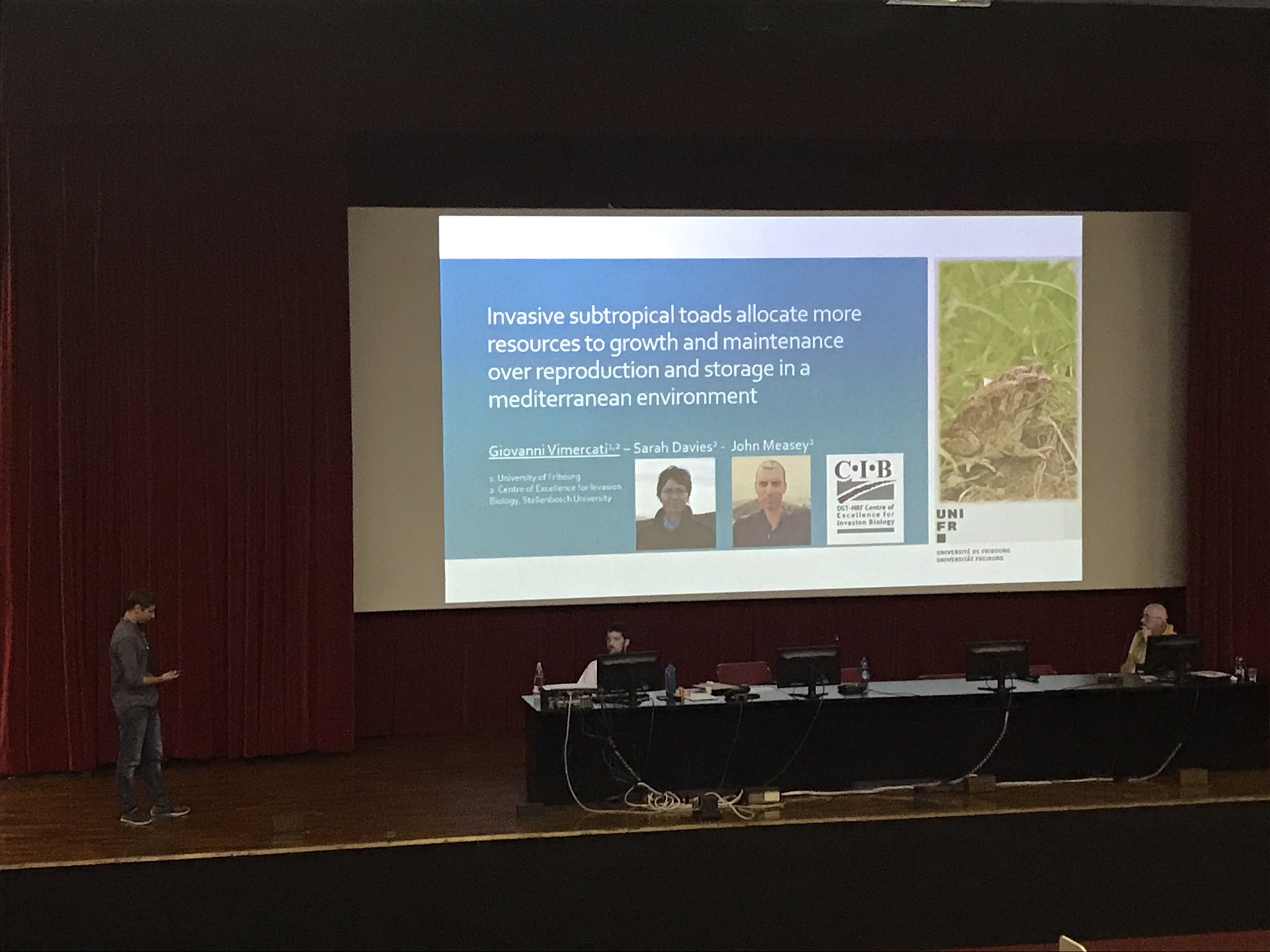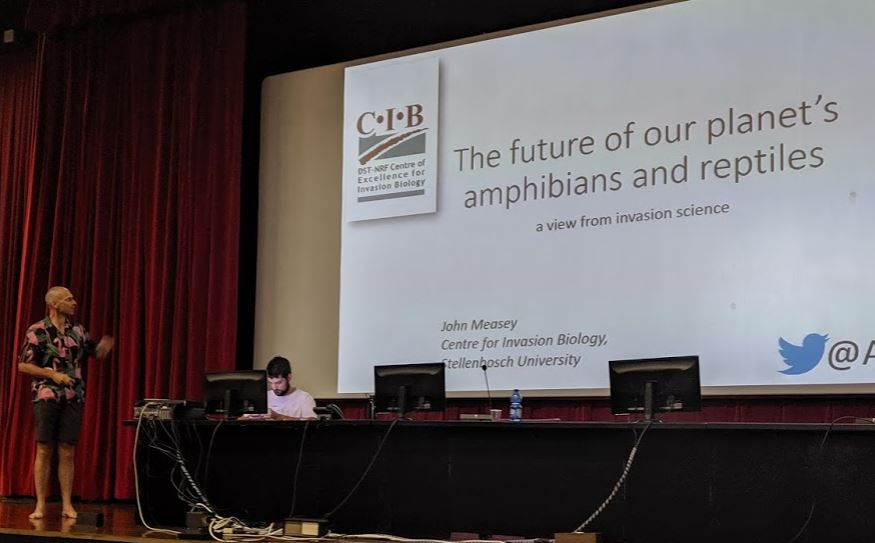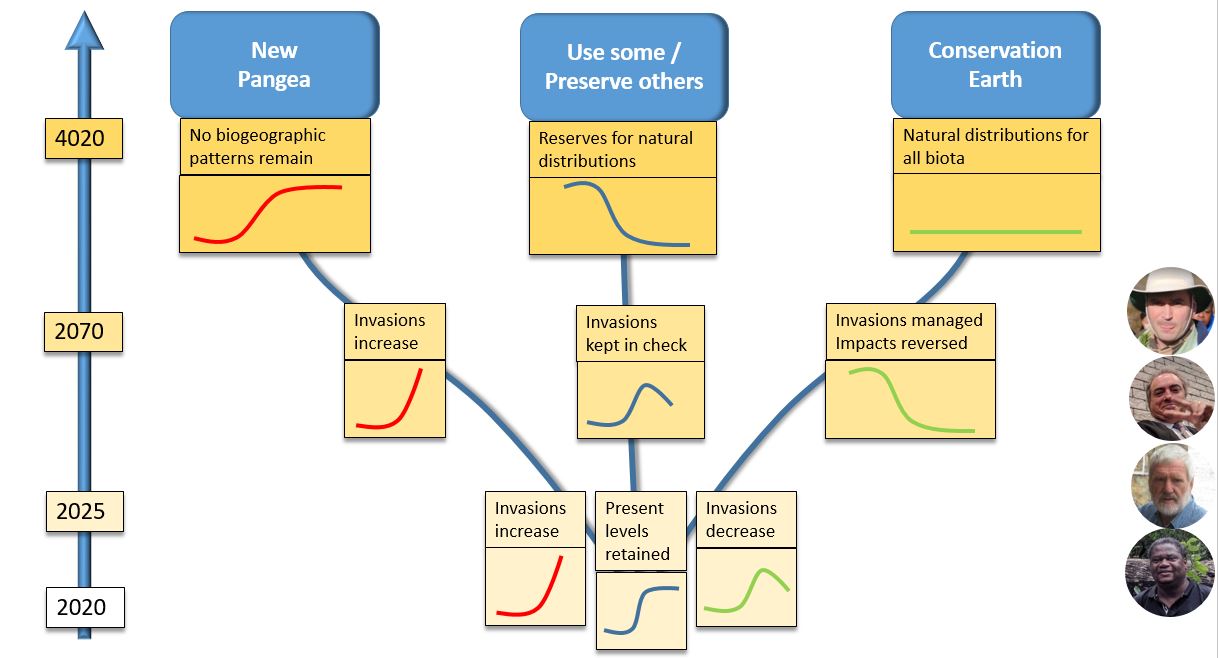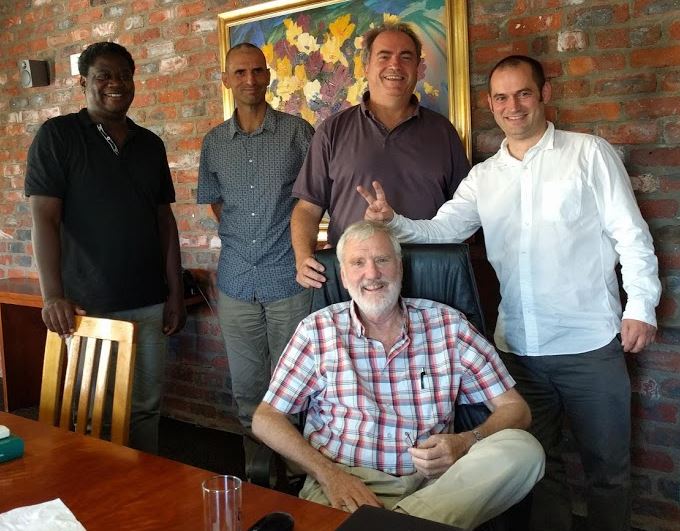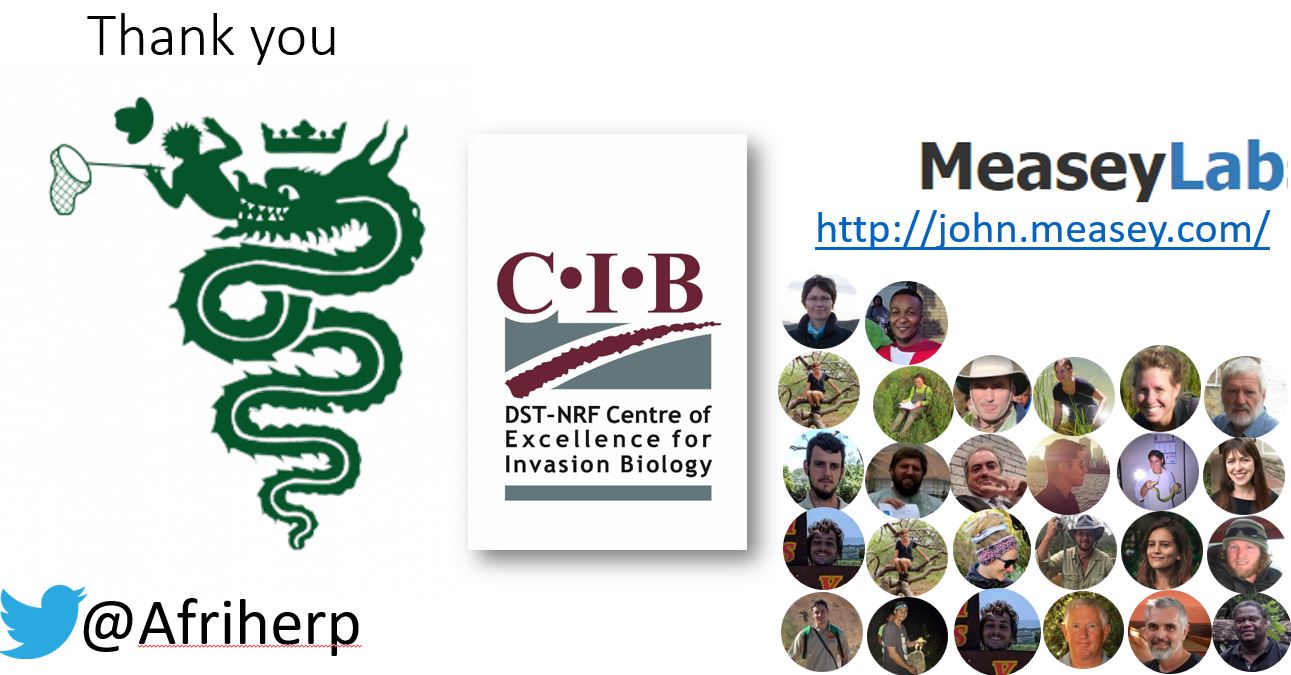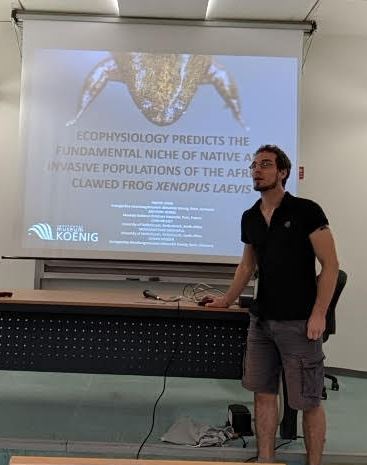The future of our planet’s amphibians and reptiles: a view from invasion science
I was asked to deliver a plenary to the 20th meeting of the Society for European Herpetology back in October 2018. This gave me a very long time to think about what soap box I wanted to get onto. This plenary invitation came with no strings, so I had the full gambit of subjects to consider. Given my current position and my recent reviews of the herp literature, it was clear to me that I wanted to give herpetologists more background and ideas about why invasion science is particularly important subject to be involved with.
I started my presentation with a reflection on the writing workshop of editors we had back in March 2019. It was John Wilson who suggested that for the last chapter of the book “Biological Invasions in South Africa” we should consider long-term trajectories of invasions, following the lead of Baum et al (2019). This gave us 4 outcomes for 2000 years’ time, and I began the plenary by describing each one and then explaining how we might expect invasion profiles to look in order to reach the outcomes.
In this slide, you’ll only see 3 outcomes as I ditched the ‘end of humanity’ trajectory as the planning for this is too similar to ‘pangea’.
You’ll be able to read more about the outcomes of this exercise in the forthcoming book chapter (Wilson et al 2019), but for the purposes of this blog post, the idea in both the plenary and the book chapter was to help people see how short-term planning needs to be in line with long-term thinking. This seems to be especially relevant now that we’ve lost the ability to think in the ‘long now’ that we had in the past.
This framework allowed me to place the Seebens et al (2017) revelation that there’s no saturation to alien introductions into the context of both alien reptiles and amphibians, and those other invasive populations that damage them (cf Nunes et al 2019).
I then continued by explaining the importance of the pet trade in future amphibian and reptile invasions (cf Measey et al 2019; Mohanty & Measey in press), and especially the relevance of invasion debt in this; such that we should not expect to see invasive populations of all of these newly traded species, but that they will come in time.
I finished off the talk, by giving a few highlights of why studying invasive species is such fun. Special shout-outs were given to studies by Nick Telford, Nitya Mohanty, Gio Vimercati, Nicola van Wilgen and Carla Madelaire (among others).
If you’ve helped and are reading this blog, but didn’t get a chance to see the plenary, here’s the acknowledgement slide at the end, in which should be your pic!
Baum SD et al. (2019) Long-term trajectories of human civilization Foresight 21:53-83 doi:10.1108/fs-04-2018-0037
Measey J et al. (2019) Why have a pet amphibian? Insights from YouTube. Front. Ecol. Evol. 7: 52. doi: 10.3389/fevo.
Nunes AL et al. (2019) A global meta-analysis of the ecological impacts of alien species on native amphibians. Proceedings of the Royal Society B, 286(1897), p.20182528.
Seebens H et al. (2017) No saturation in the accumulation of alien species worldwide. Nature Communications, 8, p.14435.
Wilson JR et al. (2019) Potential Futures of Biological Invasions in South Africa. In van Wilgen et al. Biological Invasions in South Africa. Springer.
Other MeaseyLab talks at SEH20 were:
Ginal, P. Herrel, A., Measey, J., Mokhatla, M., Rodder, D. Ecophysiology predicts the fundamental niche of native and invasive populations of the African clawed frog Xenopus laevis. XX European Congress of Herpetology, Milan 2-6 September 2019
One main threat promoting the worldwide amphibian decline is the introduction of non-indigenous amphibians, like the African Clawed Frog Xenopus laevis, which is now one of the widest distributed amphibians occurring on four continents with ongoing expansion including large parts of Europe. Species Distribution Models (SDM’s) and the concept of ecological niche are essential to predict the invasive risk of those species. Previous efforts to predict distributions of invasive amphibians have mainly focussed on correlative approaches but these can be vulnerable to extrapolation errors when projecting species’ distributions in non-native ranges. Recently, more robust process-based models, which use physiological data like critical thermal limits, or hybrid models of both approaches were used for this purpose. Previous correlative SDM’s for Europe predict different patterns in the potential distribution but it is likely that these models do not access the full invasive potential. Based on physiological performance trials we calculated size and temperature depending response surfaces, which were scaled to the species’ range matching the critical thermal limits. These ecophysiological performance layers were used in a standard correlative SDM framework to predict the potential distribution in South Africa and Europe. We found thermal performance differed significantly among native and invasive populations indicating some degree of fundamental niche change, which lead to different potential distribution patterns for the native and invasive populations in the respective ranges. Our hybrid-SDMs revealed that X. laevis has a much higher invasive potential than previous correlative models predicted for Europe.
Measey, J. The future of our planet’s amphibians and reptiles: a view from invasion science XX European Congress of Herpetology, Milan 2-6 September 2019
In 2000 years, the future of our planet could have one of four potential outcomes: end of humanity, Pangea, use some/preserve others, and conservation earth. While we have already started along the trajectory toward Pangea, our actions in the near future will determine whether we can achieve a future where we retain areas that are preserved and herpetologically distinct. Among the global change drivers, invasion science is increasing in importance because of a continuing and near exponential increase in trade. We need all herpetologists to help generate the data needed to prevent the Floridarisation of herpetology. In this presentation, I outline a number of ways in which herpetologists can push back against herpetological Pangea: (i) characterising current invasive species, (ii) determining the breadth of invasion debt, and (iii) scoping the traits of all species to establish a rational basis for future trading. Although it was only conceived in the 1950s, invasion science now draws on almost all disciplines in biology, including phylogenetics, population biology, evolutionary ecology and modelling, to name but a few. However, our best chances of preventing herpetological Pangea may come from social science studies of what drives the trade in reptiles and amphibians. The challenge for us is to retain the potential for inspiring reptile and amphibian pets for coming generations, without peppering our environment with propagules of invasive species.
Vimercati, G., Davies, S. & Measey, J. Invasive subtropical toads allocate more resources to growth and maintenance over reproduction and storage in a mediterranean environment. XX European Congress of Herpetology, Milan 2-6 September 2019
Amphibians living in cold and seasonal environments allocate more resources to growth, maintenance and storage than do conspecifics from warmer and less seasonal environments. This sustained resource allocation may be obtained at the expense of reproduction, especially when low conditions of temperature and rainfall restrict breeding season length. Invasive populations act as experiments to explore how resources are allocated in novel environments. We studied the guttural toad Sclerophrys gutturalis, a synanthropic species which naturally inhabits subtropical areas of central and southern Africa. Guttural toads were introduced in the early 2000s to Cape Town, where they rapidly became invasive. Since Cape Town experiences a mediterranean climate, the species has been exposed to an environment that is cooler and presents a different rainfall pattern from that of the native range. We targeted the Cape Town invasive population and a native source population from Durban (South Africa). After dissection, lean structural mass (bones and muscles), gonadal mass, liver mass and body fat % were measured in 161 native and invasive animals sampled at the beginning and the end of the breeding season. As expected, male and female toads from the invaded range allocate more resources to growth and maintenance than their native counterparts, whereas invasive female toads direct fewer resources to reproduction than native ones. Unexpectedly, energy storage of guttural toads does not consistently differ between invaded and native ranges. Such allocation shift may be a response to the low temperature, reduced rainfall and heightened seasonality encountered by the invasive population.
